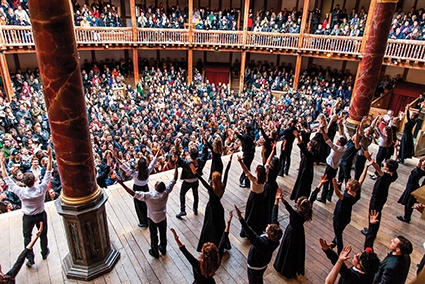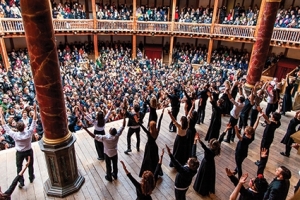The Legacy and Lasting Influence of Shakespeare on Film
The earliest versions of Shakespeare translated into celluloid start in 1899 (King John, featuring Sir Herbert Beerbohm Tree) and increase in frequency in the years up to World War One (many of which are in the excellent BFI Silent Shakespeare DVD compilation).Yet it really took until the Second World War, a healthy dose of patriotic fervour and the genius of one of Britain’s greatest actors – namely, Laurence Olivier - to create, in Henry V (1944), a Shakespeare movie in glorious Technicolor that would harness the medium to the subject matter in a way never achieved before. Olivier would then go on to complete a loose trilogy with his masterworks Hamlet (1946) and Richard III (1955).
For much of this time,Orson ‘Citizen Kane’ Welles was vying cinematically with Olivier for the title of Shakespearean film maestro, with his own series of highly creative but poverty row rendered adaptations, culminating in the nonetheless exquisite Chimes at Midnight (1965).
Although in Tinseltown USA Shakespeare was employed in acts of cinematic gene splicing, as the essential DNA of a whole host of films in popular genres; nevertheless, the most radical re-imagining of Shakespeare was happening in Japan. The decision by Japanese epic filmmaker, Akira Kurosawa, to blend his samurai story sensibilities with Noh theatre aesthetics and apply them to Shakespeare, transformed Macbeth into the enthralling historical action movie Throne of Blood(1957).
Following on from Kurosawa, filmmakers such as Russian film director, Grigiori Kozintsev, with his Soviet resourced version of Hamlet (1964), or Italian maestro Franco Zefferelli’s delicate Romeo and Juliet (1968) and Roman Polanski’s gripping, brutal and also British made The Tragedy of Macbeth (1971); brought fresh aesthetic perspectives to celluloid Shakespeare.
The advent and high volume of TV Shakespeare adversely affected UK film versions in the 1970’s (barring rare exceptions, like Derek Jarman’s 1979 The Tempest). Indeed it took the personage of actor/director Kenneth Branagh to reinvigorate Shakespeare on the big screen in Britain, commencing with the energetic Henry V (1989) and on through five other Shakespeare related titles. Also impressive is the strident spiky Richard Loncraine Richard III, memorably embodied by Sir Ian McKellen (1995).
Perhaps the most influential, mainstream non-UK made Shakespeare film was Baz Luhrmann’s star powered, gritty, good looking, contemporary US gangster version of Romeo & Juliet (1996), made at the end of the nineties and authentically retaining the play’s original language.
Very recently, new film versions of Shakespeare are coming from the Indian sub-continent. Notably, producer/director Vishai Bhardwaj has made a trio of Shakespeare-based Bollywood musical Crime Movies, starting with Maqbool (2003). Once again, Shakespeare stories are inserted into radically different cultural contexts where, despite just about everything being different, they remain clearly recognisable.
In the UK, stirring and savage new film interpretations, such as Ralph Fiennes’ adaptation of Coriolanus (2011) and the bold and bloodthirsty Macbeth (2015), have drawn critical and commercial attention.
Thus Shakespeare remains, like dark matter: the work is always there, providing a glorious heritage and also a rich, vibrant source which inspires and challenges filmmakers and performers to make new films; that can in turn enthuse and inspire new generations of viewers.
NB This is an edited version of an article available in full on the British Council Film website: http://film.britishcouncil.org/
In researching the article, the author is indebted to ‘Walking Shadows: Shakespeare’, edited by Luke Mckernan and OlwenTerris (BFI, 1994) and ‘Shakespeare and the Film’ by Roger Manvell (Barnes, 1971).
Adrian Wootton












